-
|
Monthly
electronic news bulletin for the marine life of the NE Atlantic Oceans
including the seas and seashore around the British Isles.
The
bulletin is designed for Microsoft Explorer 4 and above using medium fonts
at a resolution of 800 x 600 and can be viewed satisfactorily at a resolution
of 1024 x 768.
Subscribe
and unsubscribe options are at the foot of this page.
|
|
If
you receive this bulletin as an EMail subscriber, you may find the best
way to view the file is on your hard disc in your directory of Incoming
EMails.
|
| MARINE
LIFE NEWS
Reports
of marine wildlife from all around the British Isles, with pollution incidents
and conservation initiatives as they affect the flora and fauna of the
NE Atlantic Ocean
10
April 2009
Guernsey
commercial fisherman 'Chancre' Downes
landed a Boarfish (or Zulu Fish),
Capros
aper, while trawling for sand eels
on Great Bank outside St. Peter Port harbour. The fish had a total weight
of 38 grams and a total length of 13.2 cm. and was brought to the Guernsey
Aquarium. David Miller called me to identify it.
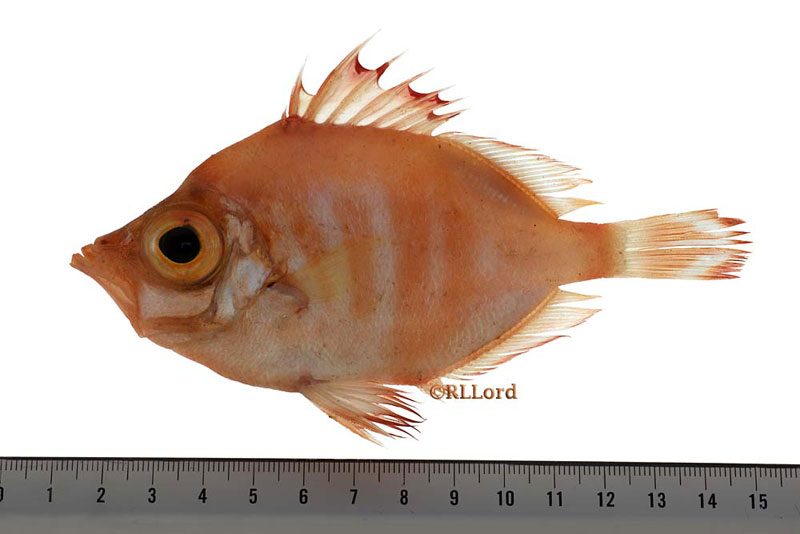
This
is only the second Boarfish
I have seen from Guernsey waters. The first one I saw was landed
by Guernsey commercial fisherman Shane Petit
on 23 February 2002.
Boarfish
are common in deep water of the western English Channel but rarely strays
east up the Channel.
The
fish's large eye and the orange/ red colour is well suited to deep water
as the longer wave length of red light is absorbed by water before the
blue and greens (which are reflected) and therefore red coloured marine
species appear dark or black at depth. The
Boarfish, like the John
Dory, has a protrusible (telescopic) mouth,
which is used for catching small species.
Sealord
Photography
BMLSS
Boar Fish
-------------------------------------------------------------------------------------------------------------------------
FORUM
NEWS
Marine Wildlife
of the North-east Atlantic Ocean Mailing Groups
Marine
Wildlife of the North-east Atlantic Ocean
Yahoo
Group
New
Group: http://uk.groups.yahoo.com/group/Glaucus
With
the closure of Smart Groups at the end of November
2006
most of the 7500+ messages have been
filed at:
Marine
Wildlife of the North-east Atlantic Ocean Jiglu
http://www.Jiglu.com/spaces/glaucus/
Images
can be uploaded to flickr.
http://www.flickr.com/groups/glaucus/
Wet
Thumb (Marine Aquariology) Forum Link

------------------------------------------------------------------------------------------------------
All
reports by Andy Horton unless the credits are given
to
other observers or reporters.
Cornish
Marine Wildlife (Ray Dennis Records) 2008
|
| PICTURE
GALLERY
Each
month, at least one special marine image will be published from images
sent to the BMLSS. This
can be of the seashore, undersea world or any aspect of the marine natural
world, especially the underwater life, but not restricted to life beneath
the waves. Topical inclusions may be included instead of the most meritorious,
and images will be limited to the NE Atlantic Ocean and adjoining seas,
marine and seashore species and land and seascapes.
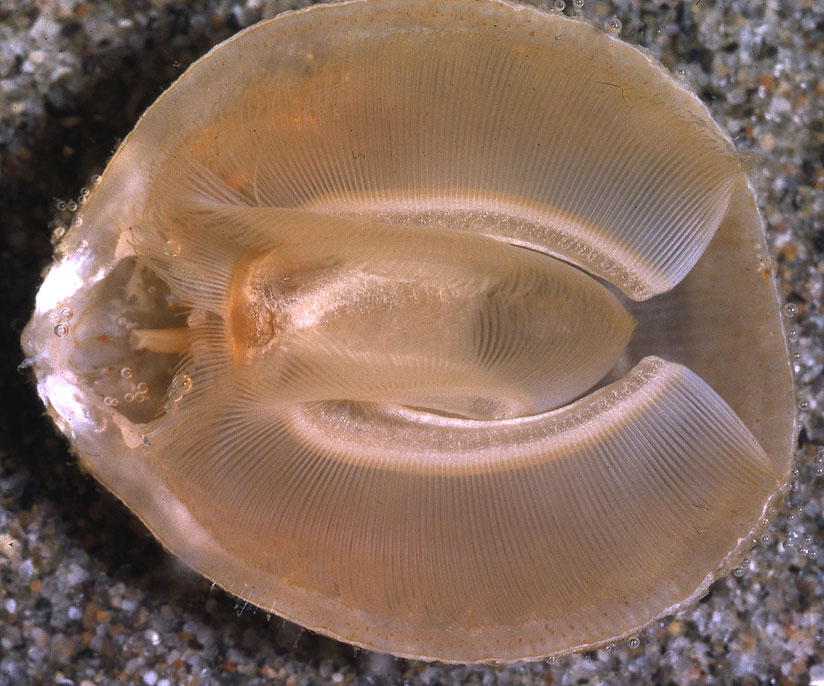
Brachiopods
Photographs
by Steve Knight
Brachiopods
are bivalve animals, something of a throw-back to ancient times. Also called
Lampshells*.
They are attached to the substrate by a short stalk
This
is what they look like inside - mainly a large filtration area
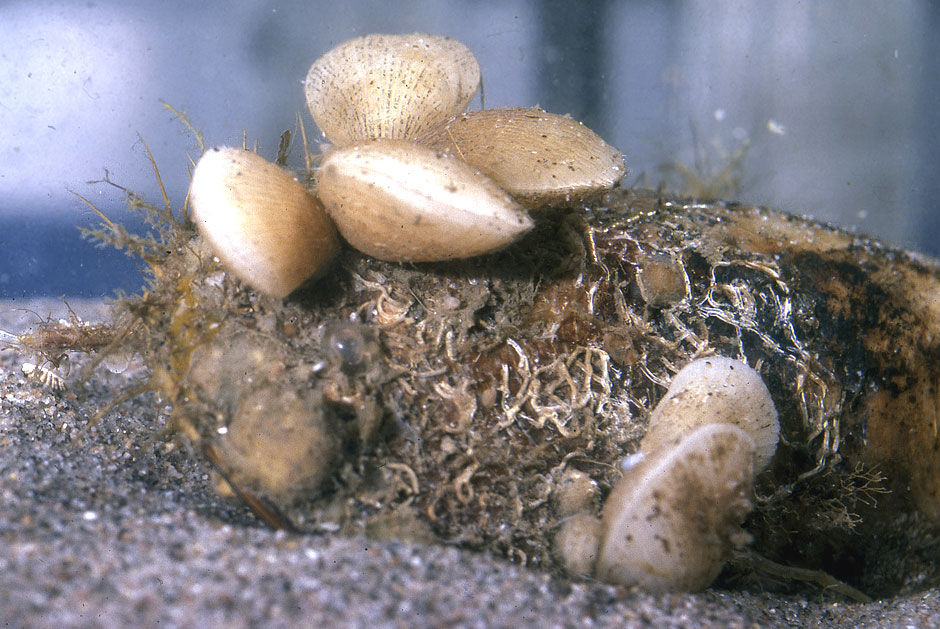
This
brachiopod was photographed off the west coast of Scotland - I don't think
that there are many species of brachiopod there. I suspect that it is Terebratulina
retusa, but could be Terebratulina septentionalis.
Comments
by Steve Knight
At
first glance these benthic sedentary bivalves look like bivalve
molluscs (in this case superficially resembling a cockle)
but as any marine biology student will now they are classified in a separate
phylum: the Brachiopoda.
Most brachiopods are attached to the substrate by means of a fleshy "stalk"
or pedicle whereas sedentary bivalve molluscs like mussels
are attached by byssal threads and oysters are
cemented to the substrate by exudations from a modified byssal gland.
After
the Permian
Extinction Event 251.4 million years ago, the more mobile Molluscs
succeeded the previously abundant brachiopods in most areas of the seas
and oceans and the remaining brachiopods survive only in specialised fringe
habitats. The best known area in the seas surrounding the British Isles
is off the west coast of Scotland.
*The
name of Lampshells allude to their resemblance to Roman
oil lamps.
Wikipedia
on Brachiopoda
Evolutionary
History of Brachiopods
Wiki
Discussion
Marlin
page on Terebratulina retusa
flickr
BRITISH
MARINE LIFE GALLERY
-------------------------------------------------------------------------------------------------------------
Shore
Topography Series
The
name of the particular coast should be included and the grid reference,
if known. Print photographs can be included in Exhibitions
and on the BMLSS Web Sites and electronic publications. Electronic images
in *.jpg format
can also be considered for the web site. They should not exceed 250K in
size.
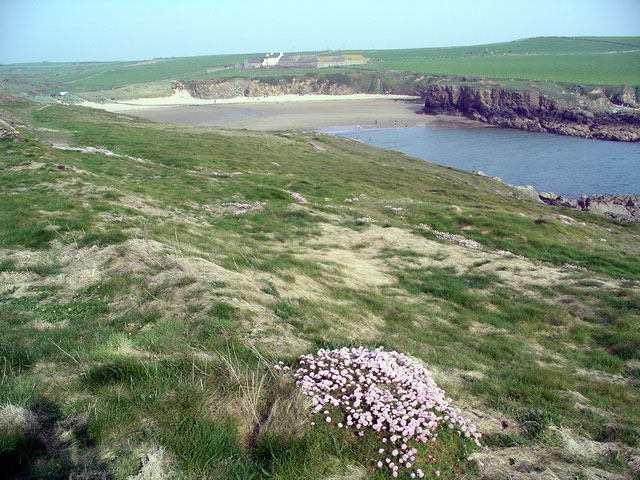
Porth
Trecastell, or Cable Bay, south-west Anglesey,
SH
3370: between Rhosneigr
and Aberffraw.
Photograph
by Lynne Kirton
on
Geograph, British Isles
A beautiful
little bay popular with surfers and kayakers. Its English
name,
Cable Bay, is because this is where telegraph cables which
spanned
the Irish Sea and Atlantic Ocean came ashore.
A small
sandy beach with a pair of rocky headlands on either side. The rockpools
are at the bottom of the rocky headlands on either side.
Blue
Text Report by Les
Melling
flickr
British
Coastal Topography
--------------------------------------------------------------------
First
enquiry by EMail to Glaucus@hotmail.com

-----------------------------------------------------------------------
Photographers
submitting pictures should indicate if they wish them to be considered
for inclusion as confirming permission takes work and time and can delay
publication of the news bulletins.

Click
on the album for more links (On-line link)
|
DIARY
In
chronological order, the most recent events are at the top of the page.
Events open to the public, free or for a nominal charge only are included.
Most Seminars need to be booked in advance.
--------------------------------------------------------------------------------------------------------------
ADUR
WORLD OCEANS DAY
Understanding
and celebrating our marine environment
Saturday
6 June 2009
10:00
am to 4:00 pm
on
Coronation
Green, Shoreham-by-Sea, Sussex,
as
part of the Adur
Festival

Adur
will be one of the UK leaders in presenting the eleventh environmental
exhibition
of World Oceans Day on Coronation
Green, Shoreham-by-Sea.
Find
out
what lives in the sea and on the seashore off the Sussex coast, with
exhibits
hosted by local experts and enthusiasts of the undersea world. Live
lobsters
and crabs, a rock pool
aquarium, the whale and dolphin exhibition,
a
touch table of strandline exhibits found on
the shore and other
interactive
displays will be on display under the marquee on the green
overlooking
the River Adur by the footbridge.
For the third year running the
Friends
of Shoreham Beach will be providing their own displays and playing
an
important role in organising the day. Allow at least an hour for an
educational
exhibition for the youngest to the oldest member of the family.
Exhibitors
will be able to find the time to answer questions about marine
life.
Admission
is free.
Adur
World Oceans Day is run by a committee comprising representatives of
the
British
Marine Life Study Society, West
Sussex County Council,
the Sea
Watch
Foundation, Friends of Shoreham Beach and other groups, with support
from
Adur
District Council.
World
Oceans Day was declared at the Earth Summit in 1992.
World
Oceans Day UK Web Page
-----------------------------------------
BIOSIS
Conference Calendar for Zoology
(Major
Link of all biological conferences around the world)
|
| PUBLIC
AQUARIA NEWS |
| Public
Aquaria List |
| CETACEAN
NEWS |
|
? What
to do if you find a stranded whale or dolphin ?
|
If
you find a LIVE stranded or injured whale or dolphin on the beach you must
send for help QUICKLY. A whale or dolphin stranding is an emergency and
the speed of response by a professional rescue team is perhaps the most
crucial factor in determining whether or not an animal can be returned
to the sea alive.
|
ENGLAND
|
WALES
|
SCOTLAND
|
|
0300 1234
999
|
0300 1234
999
|
0131 339
0111
|
|
CORNWALL
|
JERSEY
|
GUERNSEY
|
|
0845 201
2626
|
01534 724331
|
00 44 1481
257261
|
LINK
TO THE STRANDINGS PAGE
|
PUBLICATIONS
&
WEB PAGES
-----------------------------------------------------------------------------------------------------------------------
BOOKS
PUBLICATIONS
NEW
BOOKS:
Two
new interesting publications were received this month:
VIVARIUM
by
Peter Stiles
Publisher:Museum
of Barnstaple and North Devon
Philip
Henry Gosse was a popular naturalist who moved to Victorian Ilfracombe
and wrote his natural science book ‘A Naturalist’s Rambles on the Devonshire
Coast’. He later designed the first public aquarium, which opened in London.
His activities also attracted other naturalists, including Charles Darwin
and novelist George Eliot.

This
book celebrates the link between Philip Henry Gosse and his rockpool
adventures in Devon and contains lots of information about the life of
this self-taught Victorian scientist and writer.
in
conjunction with an Exhibition
that finished on 25 April 2009.
Marine
Fisheries Science Yearbook 2008/2009
Publisher:
defra
href="http://archive.defra.gov.uk/search/results.htm?cx=014361324438485032053%3Aljunwq2pe_y&cof=FORID%3A11&ie=UTF-8&q=Marine+Fisheries+Science+">To
obtain a copy from the defra web site, click on this text
 |
Sharks
in British Seas
Richard
Peirce
138
pages, colour illustrations, line drawings, colour & b/w photos.
Lots
of newspaper reports.
Publisher:
Shark Cornwall
Softcover
| 2008 | £9.99
ISBN:
978-0-955869402
|
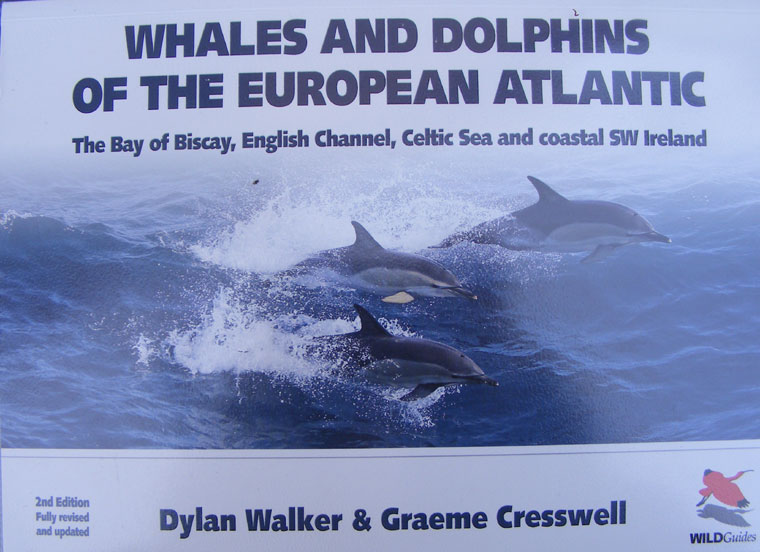
Whales
& Dolphins
of
the European Atlantic
The
Bay of Biscay, English Channel, Celtic Sea and coastal SW Ireland
by
Dylan Walker and Graeme Cresswell
with
the illustrations by Robert Still
WILDGuides
2008
£
12.00 (includes standard UK P&P)
ISBN:
978-1-903657-31-7
This
is the second fully revised and updated edition of this comprehensive guide
to the identification of whales, dolphins and porpoises (collectively known
as cetaceans) in the European Atlantic. Until very recently, most researchers
and whale-watchers were unaware of the great variety of cetaceans that
can be seen so close to the shores of western Europe. Indeed, it is only
during the last decade, when detailed cetacean surveys have been carried
out in earnest, that we have discovered how important this area is for
cetacean biodiversity.
This
field guide describes all of the 31 species of whale, dolphin and porpoise
that have occurred in the European Atlantic.
BMLSS
Cetacean Book Reviews
The
Gulf Stream
by
Bruno Voituriez
Publisher:
UNESCO
ISBN:
92-3-103995-4
222
pages, figures, glossary, bibliography
The
Gulf Stream
Amid
contemporary scenarios of potential climatic catastrophes and global warming
that might be imagined to bring a new ice age, the powerful image of the
Gulf Stream rising from the Florida Straits and flowing to the north Atlantic
inevitably provokes questions about its ecological significance and whether
it might ever stop.
Coastal
Plankton
Photo Guide for
European Seas
by
Otto Larink & Wilfried Westheide
reviewed
by Wim van Egmond
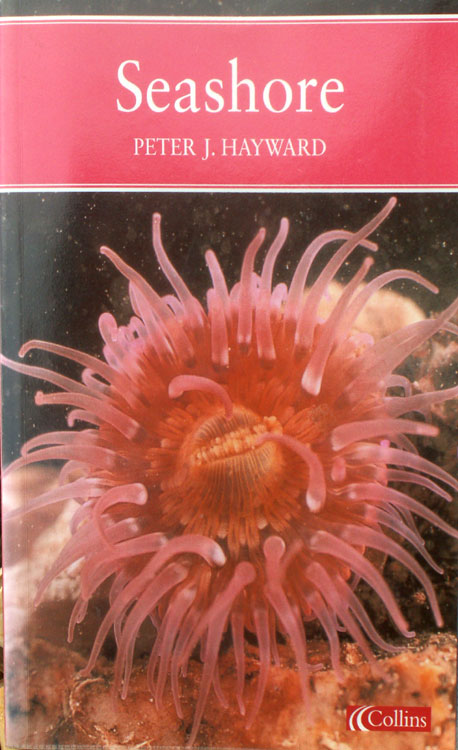 |
Seashore
(Collins
New Naturalist) (Paperback)
by
Peter Hayward
Collins
2004
ISBN:
0-00-220031-7
Amazon
Web Site |
Paperback.
Pp 288. Colour & b/w photographs, illustrations, charts, maps and bibliography.
Fine copy. "New Naturalist" Seashore is a comprehensive, authoritative
account of the natural history of the seashore.
BMLSS
General Guides
BMLSS
Advanced Guides
.
JOURNALS:
SAVE
OUR SEABIRDS NETWORK
Working
to reduce Marine Pollution and to help the birds caught in it
Quarterly
Newsletter
Registered
Charity 803473
--------------------------------------------------------------------------------------------------------------------
WEB
SITES
Decision-making
in Marine Mammal
Rescue
and Rehabilitation
Eastern
English Channel Habitat Atlas for Marine Resource Management
is
available for download from
http://charm.canterbury.ac.uk/atlas/pge.htm
Encyclopaedia
of Marine Life of Britain and Ireland
http://www.habitas.org.uk/marinelife/index.html?item=about
Marine
Fauna of Norway
http://www.seawater.no/fauna/e_index.htm

WET
THUMB (Marine Aquariology)
EFORUM
PAGE
BMLSS:
Marine Life Articles in Publications (Link)
|
SOCIETY
INFORMATION
The
British Marine Life Study Society are responsible for producing the journal
GLAUCUS,
which is the first publication exploring the marine life of the seas surrounding
the British Isles available to the general public. In
future, I expect the publication to be in an electronic format.
-------------------------------------------------------------------------------------------------------------------------
EMail Address
 EMail
address for messages to the British Marine Life Study Society EMail
address for messages to the British Marine Life Study Society
----------------------------------------------------------------------------------------------
Membership 2009
Plans
have not yet been finalised for the publications and subscriptions for
year 2009. Back copies of previous issues are still available.
|
|
Bulletin
Details
If
you receive this Bulletin direct from the British Marine Life Study Society
it will contain only hypertext and image (*.htm *.gif & *.jpg) files.
Recipients
can only unsubscribe if the Bulletin is received directly from the
BMLSS.
Permission
is granted to forward the Bulletin on unaltered. However, you will have
to include the images separately.
Subscribe/Unsubcribe
http://groups.yahoo.com/group/BMLSS-Torpedo
To
save download times, only new images are included with each Bulletin.
The
Bulletin is designed to be viewed on Internet Explorer using medium fonts
at
a resolution of 800 x 600.
Viewing
should be possible on Netscape and other browsers. |
|
Printing
the two column version of Torpedo (from issue 28)
These
pages are not designed for the default settings on the Page Set-ups of
your browser. I recommend viewing in Microscope Internet Explorer 6 and
altering the right and left hand columns in the Page Set-up menu to 9 mm
(from 19 mm).
The
page set-up can also be amended in Netscape Composer and other web page
editors, and this has the advantage of enabling the specified number of
pages to be printed and the information about the file (name, path, date)
to be deleted.
Some
of the images may not display if you have changed your directory for downloaded
files. The images may also not display properly if your settings on your
EMail software do not allow you do this automatically. When received in
Pegasus the format is changed slightly, but the bulletin is still readable.
|
---------------------------------------------------------------------------------------------------------------------------------
Compiled
on Netscape Composer 4.7 and other programs
|

